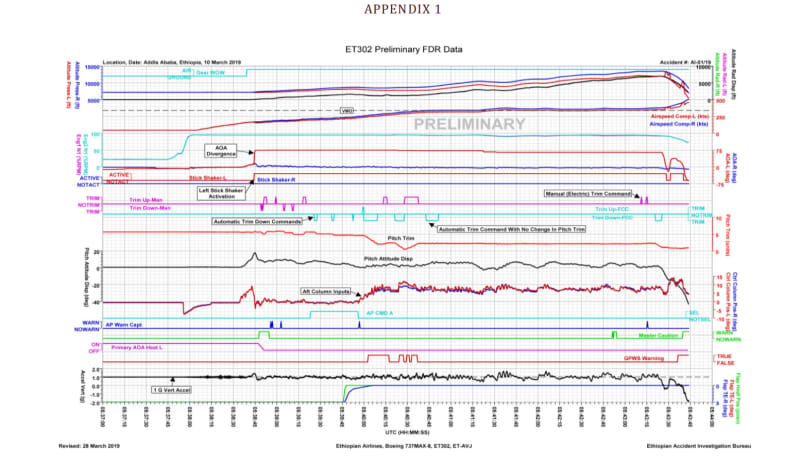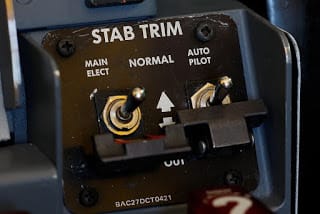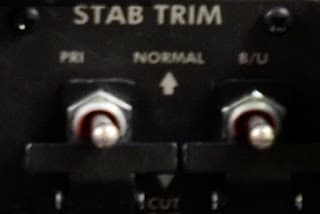waross said:
Does speed trim include MCAS?
Yes, that's my understanding at this time. To a pilot, "Speed trim" is a good meaningful name for the system in this context. Pilots all have to master continuously managing the aircraft speed, and at times re-trimming this speed, no matter what aircraft they fly. It is one of the most universal aviation skills. A name such as "MCAS" would not be easily recognizable. Remember that Boeing promised minimum re-training of pilots, so they'd cut down on the alphabet soup, especially on stuff like this.
Another thing, as I'm seeing it now, is that I think the pilots and the MCAS system are making adjustments to the exact same trim mechanism, even though they us different controls to do it. The pilot has a big wheel on the center console, while the MCAS has an electric actuator. Adjusting the trim of the elevator means that pilot has to exert more or less force on the control column to maintain the attitude of the aircraft. Usually the pilot adjusts trim until the control column force needed to maintain a steady airspeed is zero or very light.
A lot of folks who aren't pilots know that the pitch of the nose should be "level" when flying normally, but there's more to that. The pitch you set for the nose actually determines the speed you fly. The engines play a role, too, of course, but every time you change the power and re-set the pitch of the nose, you settle out at a new airspeed, and you also have to reset the trim. Again back to this elementary piloting duty to keep the aircraft set properly.
Here we have the 737 Max8 trying to do some of that on behalf of the pilot. It's not supposed to be active during cruise, but during climb the angle of attack is high and the MCAS kicks on at times to compensate for oddball pitching moments which, we are learning, do counter-intuitive things on this aircraft. But the pilots don't know much about the automatic MCAS system, and they're trying to do this job the way they've been drilled to do it for their entire careers. Something the MCAS does is contrary to their expectation, or it wages war with the crew under some conditions.
This is becoming more clear, as to how the trim mechanism can find itself run down to the end of its travel, leaving the pilots with control column forces they cannot overpower.
waross said:
Releasing the stick for a second
Yeah, not just a second. More like minutes. If the MCAS has the trim bottomed out, then it will take a long time for it to slowly drive the lead-screw back up to the neutral. Oh, and the MCAS needs time to recognize that the airspeed is stable and decide that it CAN begin to reduce the trim adjustment. With all the talk about how the MCAS activates the trim to compensate for high angle of attack, there's been less discussion given to when and how it relinquishes its control, after the aircraft is leveled off.
No one believes the theory except the one who developed it. Everyone believes the experiment except the one who ran it.
STF





